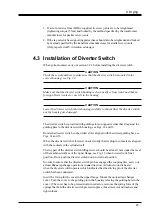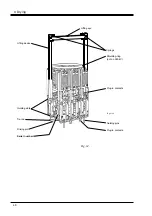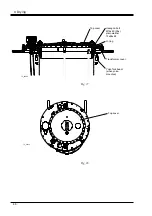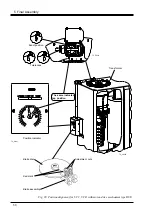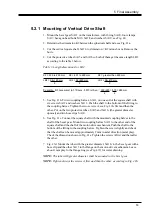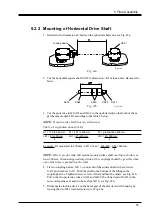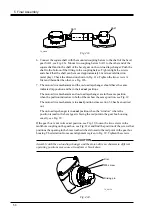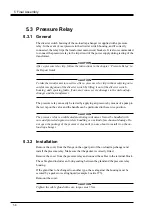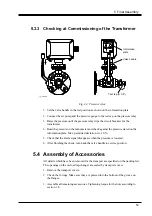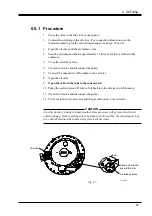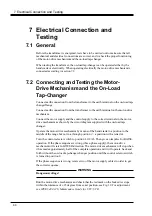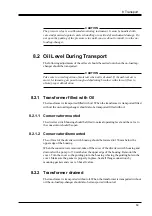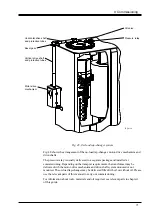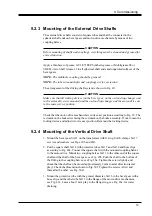
58
5 Final Assembly
5.3 Pressure Relay
5.3.1 General
The diverter switch housing of the on-load tap-changer is supplied with a pressure
relay. In the event of overpressure in the diverter switch housing, and if correctly
connected, the relay trips the transformer main circuit breakers. It is also recommended
to connect the pressure relay in the trip circuit of the power supply during testing of the
transformer.
CAUTION
After a pressure relay trip, follow the instructions in the chapter Pressure Relay in
the Repair Guide.
CAUTION
To take the transformer into service after a pressure relay trip without carrying out a
careful investigation of the diverter switch by lifting it out of the diverter switch
housing, and repairing faults, if any, may cause severe damages to the on-load tap-
changer and the transformer.
The pressure relay can easily be tested by applying air pressure by means of a pump to
the test tap on the valve and the handle can be pad-locked in the service position.
CAUTION
The pressure relay is a calibrated monitoring instrument. It must be handled with
care and protected against careless handling or any kind of mechanical damage. Do
not open the package of the pressure relay until you are about to install it on the on-
load tap-changer.
5.3.2 Installation
Remove the cover from the flange on the upper part of the on-load tap-changer and
install the pressure relay. Make sure that the gasket is correctly fitted.
Remove the cover from the pressure relay and connect the cables to the terminal block.
The cable gland includes an O-ring sealing between the gland and the pressure relay
housing.
If the gland has to be changed to another type, the seal against the housing must be
secured by a gasket or sealing liquid (example Loctite 275).
Remount the cover.
CAUTION
Tighten the cable gland with care, torque max 5 Nm.


